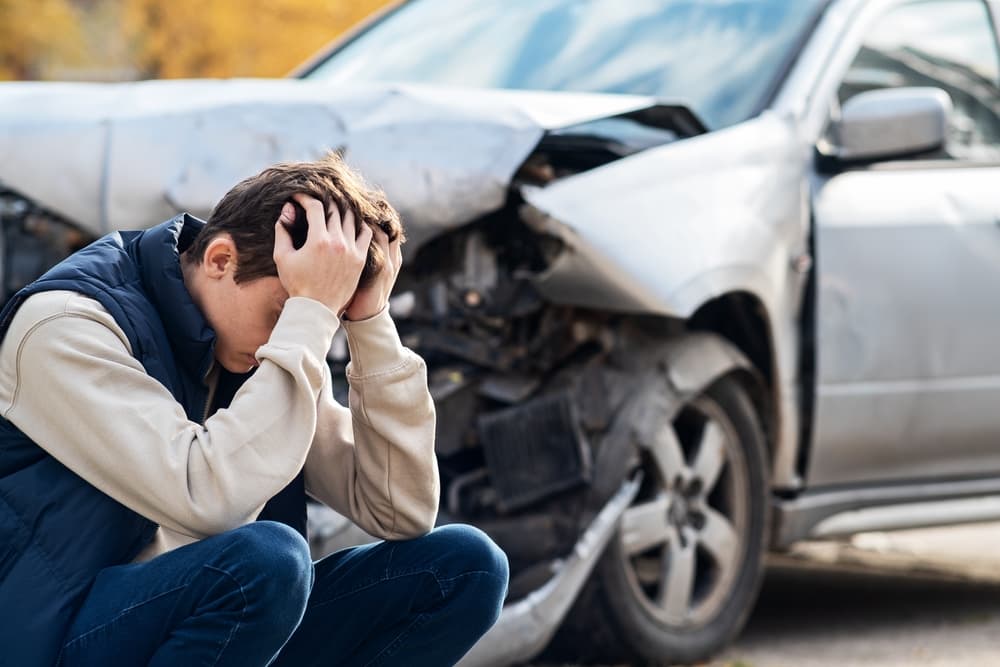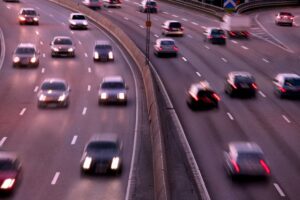Where Do Austin Car Accidents Most Often Occur?

In the busy city of Austin, traffic crowds highways and roadways as residents and visitors make their way through the city and state. Unfortunately, these busy roads also see a significant number of car accidents. The legal team of Austin car accident lawyers at Lorenz & Lorenz Accident & Injury Lawyers PLLC has handled hundreds of Austin car accident claims. Our local lawyers are familiar with the streets and traffic patterns where accidents happen. Let’s look at specific accident hotspots, identifying locations where Austin car accidents most occur. We will also take a broader view of where accidents commonly occur, such as busy intersections.
Austin Car Accident Statistics
The Austin American-Stateman reported the number of annual traffic fatalities has increased for two years running. The most current report from the Austin police department recorded 122 deaths, the highest death toll for a single year in nearly four decades. Pedestrian crashes made up the highest number of deaths.
Data collected by Vision Zero notes high-risk locations for traffic fatalities include I-35 frontage roads and North Lamar Boulevard (Texas 275). The American-Stateman notes of the people killed on Texas roadways in one year, the majority were traveling on roads managed by the Texas Department of Transportation (TxDOT) and the remainder on city-run roads.
In addition to fatalities, Vision Zero reports 410 accidents with serious injuries in its most recent one-year reporting period and 11,465 total crashes.
Interstate 35 and the I-35 Frontage Roads
Interstate 35 runs through the heart of Austin. It is the connector linking cities and shaping the pulse of Texas travel. As one of the busiest and most crucial roadways in the state, I-35 plays a pivotal role in facilitating commerce, tourism, and daily commutes.
However, the convenience of I-35 comes with its own set of challenges, and traffic congestion is a familiar companion for those navigating its lanes. The sheer volume of commuters, coupled with the interplay of local and through traffic, creates a dynamic traffic ecosystem that requires patience and strategic driving. I-35 and its frontage roads are among the most risky areas for Austin car accidents.
I-35 Traffic Risks
Here are some common car accident risks on interstate highways:
- High Speeds: The fast-moving nature of traffic on interstates increases the severity of accidents. High speeds can lead to more significant collisions and reduce the time available for drivers to react.
- Lane Changing and Merging: Frequent lane changes and merging at high speeds can result in accidents, especially when drivers fail to signal, check blind spots, or adjust their speed accordingly.
- Distracted Driving: Distractions, such as phone use, eating, or adjusting in-car entertainment systems, can lead to delayed reactions and contribute to accidents on the interstate.
- Tailgating: Following too closely (tailgating) is a common risk on interstates. Sudden stops or slowdowns can lead to rear-end collisions when drivers do not maintain a safe following distance.
- Construction Zones: Construction areas with reduced speed limits, lane closures, and changing traffic patterns can be challenging to navigate and may contribute to accidents.
- Fatigue and Drowsy Driving: Long stretches of highway and monotonous driving conditions can lead to driver fatigue, increasing the risk of accidents due to impaired reaction times.
- Wrong-Way Driving: Incidents of wrong-way driving, where a vehicle travels in the opposite direction, pose a severe risk and can lead to head-on collisions.
Frontage Road Traffic Risks

The bustling frontage roads flanking Interstate 35 also present a unique set of challenges for drivers. A frontage road, also commonly referred to as a service road or access road, runs parallel to a major highway or interstate. It provides access to businesses, residences, and other properties along the highway.
Frontage roads adjacent to busy interstates can pose specific car accident risks due to their proximity to high-speed traffic and frequent points of entry and exit. Here are some common risks associated with frontage roads:
- Merge and Exit Points: Increased opportunities for merging onto and exiting from the frontage road can lead to abrupt lane changes, creating potential collision points.
- Differing Speeds: Vehicles on frontage roads may travel at slower speeds compared to the main interstate. The speed differential between the frontage road and the highway can result in challenges for merging and lane changes.
- Intersection Hazards: Frontage roads often have intersections with cross streets or other roads. Interactions between local traffic and vehicles entering or exiting the interstate can increase the risk of accidents, especially at signalized or unsignalized intersections.
- Limited Visibility: Driveways, structures, and vegetation along frontage roads may limit visibility for drivers, making it challenging to anticipate and react to traffic conditions.
- Inattentive Drivers: Drivers on frontage roads might be distracted or less attentive, assuming a lower-speed environment. This can lead to delayed reactions when merging onto the interstate or responding to changes in traffic flow.
- Tailgating and Rear-End Collisions: The frequent need for slowing down or stopping on frontage roads, particularly near intersections, can contribute to an increased risk of tailgating and rear-end collisions.
North Lamar Boulevard (Texas 275)
Navigating North Lamar Boulevard (Texas 275) in Austin poses specific challenges and car accident risks due to its urban setting and varied traffic conditions. Understanding these risks is crucial for drivers to stay vigilant and practice safe driving habits. These challenges make Texas 275 another high-risk area for Austin car accidents. Here are some of the potential car accident risks on North Lamar Boulevard:
- High Traffic Volume: North Lamar Boulevard is a major thoroughfare with high traffic volume, especially during peak hours. Congestion can lead to rear-end collisions, abrupt stops, and challenges with lane changes.
- Intersection Hazards: Numerous intersections along North Lamar Boulevard increase the risk of accidents, including T-bone collisions and accidents caused by drivers running red lights or failing to yield the right of way.
- Pedestrian and Cyclist Interactions: As a bustling urban street, North Lamar Boulevard sees a significant number of pedestrians and cyclists. The interaction between vehicles and non-motorized road users poses additional risks, requiring drivers to be attentive to crosswalks and bike lanes.
- Diverse Businesses and Driveways: The presence of businesses and driveways along North Lamar introduces potential conflict points. Vehicles entering or exiting these establishments may contribute to accidents, especially if drivers are not cautious.
- Variable Speed Limits: Parts of North Lamar Boulevard may have variable speed limits or areas with reduced speed for safety reasons. Failure to adjust speed accordingly can lead to accidents, particularly in construction zones.
- Distracted Driving: Urban environments can be distracting, with numerous signs, signals, and potential points of interest. Drivers engaging in behaviors such as texting or adjusting GPS increase the risk of accidents.
- Road Design and Maintenance: Poor road conditions, potholes, or inadequate signage can contribute to accidents. Drivers should be aware of the road conditions and report any maintenance concerns to authorities.
Additional Austin Traffic Risks
In addition to these specific locations, navigating Austin’s roadways in general demands a keen understanding of the varied risk factors dispersed across the city. Here are a few more situations to look out for throughout the Austin area.
Busy intersections, often bustling with converging traffic, pose a significant threat. Their complex dynamics, coupled with issues like signal timing and left-turn challenges, contribute to a higher likelihood of accidents.
Construction zones, marked by reduced speed limits and altered traffic patterns, present another focal point of risk. Negotiating these areas demands heightened attention to avoid collisions resulting from abrupt stops, lane shifts, or distracted driving.
School zones and residential areas introduce unique challenges, with the presence of children and slower speeds necessitating increased caution. Vigilance at intersections, adherence to speed limits, and a proactive approach to safety contribute to accident prevention in these critical zones.
In summary, Austin’s traffic accident risks are distributed across the city, emphasizing the importance of defensive driving, adherence to traffic rules, and a heightened awareness of the specific challenges presented by busy intersections, construction zones, and school and residential areas.
Contact Lorenz & Lorenz Accident & Injury Lawyers PLLC

Ted Lorenz, Austin Car Accident Lawyer
If you’ve experienced a car accident in Austin, don’t navigate the legal complexities alone. Trust Lorenz & Lorenz Accident & Injury Lawyers PLLC, your local ally with a dedicated team of lawyers who intimately understand Austin’s roads.
Whether you’re dealing with personal injury or facing the devastating consequences of wrongful death, our experienced personal injury lawyers in Austin are here to guide you through every step of the legal process. We know the local terrain, and our Austin-based office ensures that our lawyers are easily accessible to clients, and ready to provide the personalized attention your case deserves.
At Lorenz & Lorenz Accident & Injury Lawyers PLLC, we’re not just legal professionals; we’re your advocates committed to securing the compensation you deserve. Take action today – reach out to Lorenz & Lorenz Accident & Injury Lawyers PLLC and let us stand by your side during this challenging time. Your peace of mind starts with a call to us. Call our Austin law office at 830-251-4761 or complete our online contact form.
